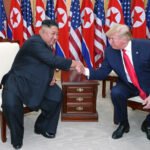A man is taking a picture of Notre Dame Paris with a Galaxy Tab
Samsung Electronics Co. will use MediaTek Inc.’s high-end application processor (AP) Dimensity 9300+ instead of Qualcomm’s Snapdragon chipsets for its new premium tablet Galaxy Tab S10 to be unveiled as early as October, according to industry sources on Tuesday.
It will mark the first time for the South Korean tech giant to power Galaxy Tab series with MediaTek’s processors, a move viewed as Samsung’s strategy to leverage its cooperation with the Taiwanese fabless company to gain the upper hand in price negotiations with Qualcomm.
On top of the advancement in MediaTek’s technology, Samsung’s shift to MediaTek also reflects its wishes to attract the world’s largest AP producer as a customer for its foundry operations, said industry watchers.
Samsung produces APs under the Exynos brand, but trails behind Qualcomm and MediaTek.
MediaTek’s Dimensity 900 mobile chipset
Samsung’s premium tablet computers have been fited in mainly with Qualcomm’s Snapdragon that combines central processing units and graphic processing units.
The predecessors of the upcoming Galaxy Tab S10 were powered by Snapdragon chips, Galaxy Tab S8, released in 2022, was equipped with Snapdragon 8 Gen 1. The Galaxy Tab S9, launched in 2023, was embedded with Snapdragon 8 Gen 2.
BETTER PERFORMANCE AT CHEAPER PRICE
Dimensity 9300+ was produced with TSMC’s 4-nanometer process technology, the same as that for Snapdragon 8 Gen 3.
Some industry observers said MediaTek’s Dimensity 9300+ performs better than Qualcomm’s latest AP model despite its modest price, about 10% cheaper than Snapdragon.
The rising price of APs also led Samsung to choose Dimensity 9300+ over Snapdragon.
In 2023, APs accounted for 18.1% of a Samsung smartphone manufacturing cost, up from 12.8% in 2022. Its heavy reliance on Qualcomm has lifted the proportion of AP prices.
“If it increases its reliance on Qualcomm, it will lose its barganing power in price negotiations,” said a semiconductor industry source.
“MediaTek is a good card that Samsung can use as a leverage in negotiations with Qualcomm,” he added.
Samsung unveiled the industry’s fastest LPDDR5X DRAM in April 2024
SAMSUNG’S MOBILE CHIPS FOR USE IN MEDIATEK’S DIMENSITY
MediaTek sells about 100 million units of chipsets every quarter and outsources its premium chipset production mainly to TSMC.
It is now emerging as a key partner for Samsung to verify its new mobile chips.
Last week, Samsung said it has completed the performance verification of its latest LPDDR5X chip for use in MediTek’s next-generation mobile AP chipset Dimensity. The LPDDR5X DRAM boasts the industry’s fastest operating speed.
MediaTek has evolved from a smart TV chip provider to smartphone AP developer.
It has built its market presence with its Helio G series chipsets, or low-to medium-priced APs, claiming Chinese smartphone makers such as Oppo, Vivo and Xiaomi as customers.
In the first quarter of this year, it overtook Qualcomm to rise to the top position in the smartphone AP market, taking up 39% of global shipment of mobile chipsets.
Its growth also came at the expense of the decline of Chinese electronics manufactuer Huawei and its fabless unit HiSilicon on the back of the US sanctions on Chinese chipmakers.
Amid the ongoing tensions between the US and China, Xiaomi, Oppo and Vivo have turned to the Taiwanese chip maker for mobile processors.
By Jeong-Soo Hwang
hjs@hankyung.com
Yeonhee Kim edited this article















